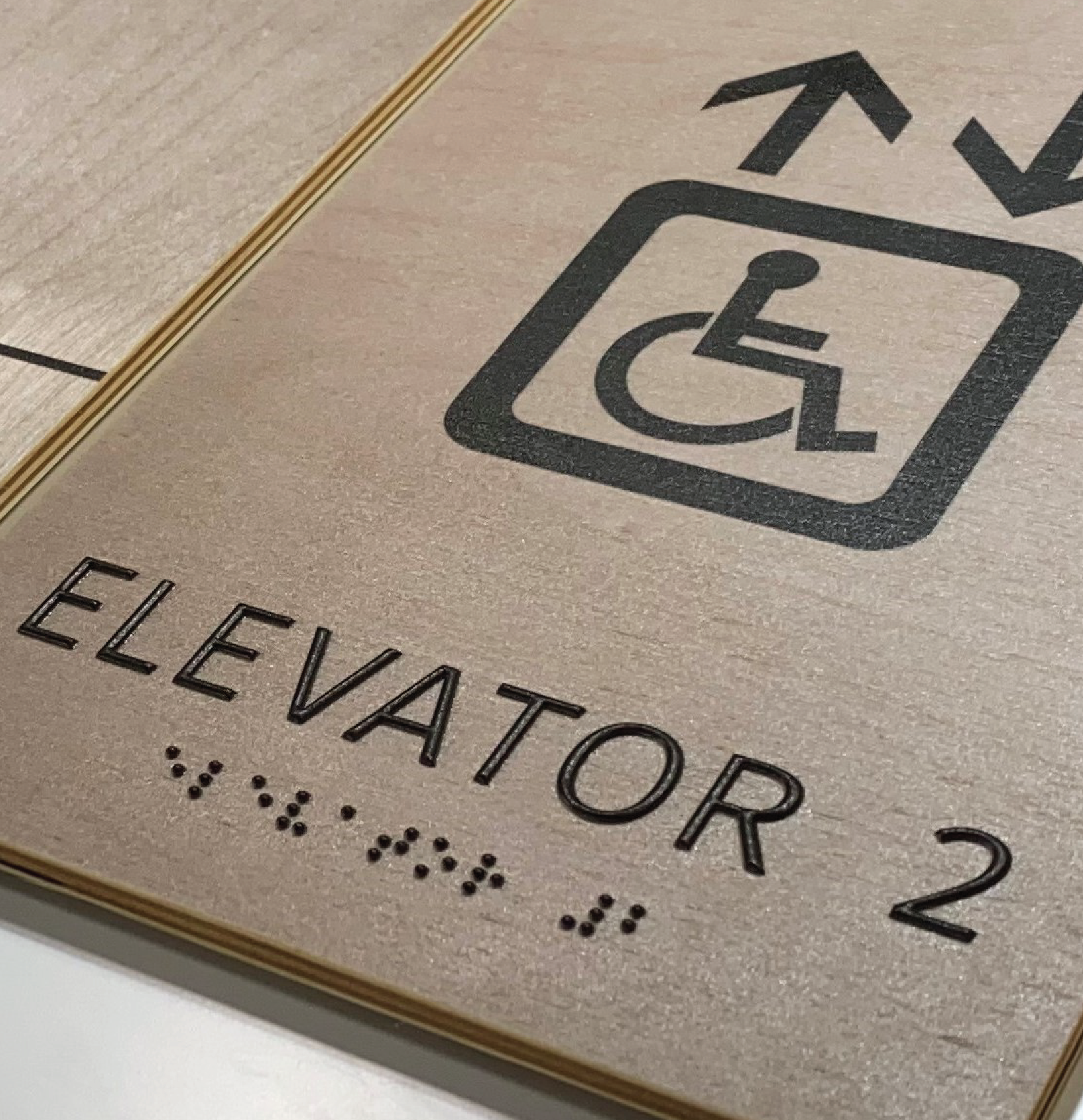The Influence of ADA Signs on Community Ease Of Access
Discovering the Secret Attributes of ADA Signs for Boosted Access
In the realm of accessibility, ADA signs offer as silent yet powerful allies, guaranteeing that rooms are inclusive and accessible for individuals with specials needs. By integrating Braille and tactile elements, these signs break barriers for the aesthetically impaired, while high-contrast color systems and understandable fonts cater to diverse visual demands.
Importance of ADA Compliance
Guaranteeing conformity with the Americans with Disabilities Act (ADA) is important for promoting inclusivity and equal gain access to in public areas and workplaces. The ADA, passed in 1990, mandates that all public centers, employers, and transport services suit individuals with handicaps, ensuring they enjoy the same legal rights and chances as others. Conformity with ADA requirements not just satisfies lawful obligations but also enhances an organization's online reputation by demonstrating its dedication to variety and inclusivity.
One of the vital elements of ADA compliance is the implementation of available signage. ADA indications are developed to make certain that individuals with impairments can easily navigate with buildings and rooms. These signs should stick to particular guidelines relating to size, typeface, shade contrast, and placement to guarantee visibility and readability for all. Appropriately executed ADA signs aids eliminate barriers that individuals with specials needs typically encounter, thereby advertising their independence and self-confidence (ADA Signs).
In addition, sticking to ADA regulations can reduce the danger of prospective penalties and lawful repercussions. Organizations that fail to conform with ADA standards might encounter fines or claims, which can be both economically burdensome and damaging to their public image. Hence, ADA conformity is integral to cultivating an equitable atmosphere for everybody.
Braille and Tactile Aspects
The incorporation of Braille and tactile aspects right into ADA signage embodies the concepts of ease of access and inclusivity. It is usually put beneath the matching text on signage to ensure that individuals can access the info without visual aid.
Tactile aspects prolong beyond Braille and include raised characters and symbols. These elements are created to be discernible by touch, enabling individuals to recognize area numbers, bathrooms, exits, and various other important locations. The ADA sets certain standards relating to the dimension, spacing, and positioning of these responsive aspects to optimize readability and make certain uniformity across various atmospheres.

High-Contrast Color Design
High-contrast shade schemes play a critical function in enhancing the visibility and readability of ADA signage for people with visual disabilities. These systems are crucial as they make the most of the difference in light reflectance in between message and background, making certain that indications are quickly discernible, even from a range. The Americans with Disabilities Act (ADA) mandates making use of certain color contrasts to suit those with minimal vision, making it an important element of conformity.
The efficiency of high-contrast shades lies in their capacity to stick out in various lights problems, consisting of dimly lit settings and areas with glow. Commonly, dark message on a light history or light text on a dark history is utilized to achieve ideal comparison. As an example, More Help black message on a yellow or white background offers a stark visual distinction that helps in fast acknowledgment and understanding.

Legible Fonts and Text Size
When considering the layout of ADA signage, the choice of legible fonts and appropriate message dimension can not be overemphasized. The Americans with Disabilities Act (ADA) mandates that typefaces should be not italic and sans-serif, oblique, script, highly decorative, or of unusual type.
The size of the message also plays a pivotal role in access. According to ADA guidelines, the minimum message height need to be 5/8 inch, and it needs to raise proportionally with seeing range. This is particularly vital in public rooms where signage requirements to be reviewed promptly and precisely. Uniformity in text dimension adds to a natural aesthetic experience, helping people in browsing atmospheres efficiently.
Additionally, spacing between lines and letters is essential to clarity. Ample spacing stops characters from appearing crowded, improving readability. By adhering to these standards, developers can substantially boost access, making certain that signs offers its designated objective for all individuals, despite their aesthetic capabilities.
Effective Placement Techniques
Strategic positioning of ADA signs is important for taking full advantage of ease of access and guaranteeing compliance with lawful standards. ADA guidelines specify that indications should be mounted at a height between 48 to 60 inches from the ground to guarantee they are within the line of view for both standing and seated individuals.
In addition, indications should be put adjacent to the lock side of doors to permit easy useful reference identification before entrance. Uniformity in indicator positioning throughout a facility enhances predictability, lowering confusion and enhancing total customer experience.

Verdict
ADA indications play a vital duty in promoting ease of access by incorporating attributes that address the requirements of people with impairments. These aspects collectively foster an inclusive environment, underscoring the relevance of ADA conformity in making certain equivalent access for all.
In the realm of access, ADA signs serve as silent yet powerful allies, making certain that rooms are inclusive and accessible for individuals with disabilities. The ADA, passed in 1990, mandates that all public go to this website centers, companies, and transport services accommodate individuals with specials needs, ensuring they appreciate the exact same rights and opportunities as others. ADA Signs. ADA signs are made to ensure that people with handicaps can quickly browse via structures and spaces. ADA guidelines stipulate that signs need to be installed at a height between 48 to 60 inches from the ground to guarantee they are within the line of sight for both standing and seated individuals.ADA indications play an essential duty in promoting access by integrating functions that attend to the needs of individuals with disabilities